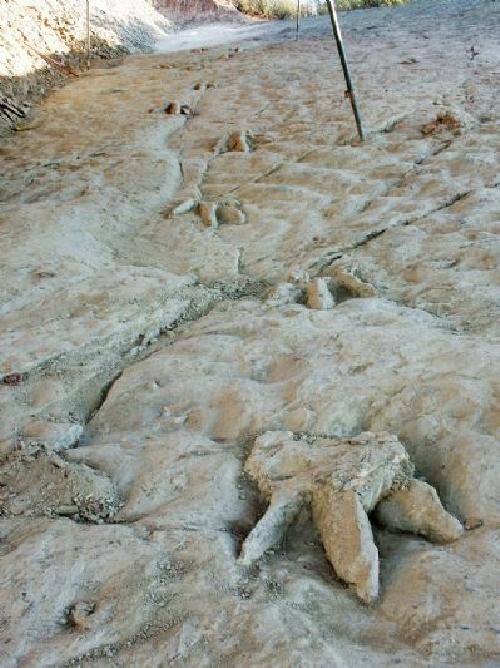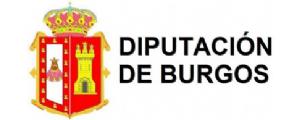COSTALOMO AND THE FAUNAS OF CRETACEOUS DINOSAURS
The Costalomo site in Salas de los Infantes preserves 239 ichnites from the Lower Cretaceous (125 million years ago). Its 3D footprints truly reproduce the dinosaur’s “feet” digits and are unique in the world’s ichnologic record. Theropod footprint belonging to the trackway of the dinosaur “Atila”.
A VARIED FAUNA
Diverse types of dinosaurs are represented in Costalomo, theropods abound. One of these trackways contains a 75 cm long footprint belonging to an about 15 m long dinosaur. This fearsome predator, that might have been a spinosaurid, was named “Atila” by paleontologists. Other groups found are: ornithopods, sauropods and avian theropods (dinosaurs with feathers, being direct ancestors of birds). (FOTO DE MAPAMUNDI) Inside the circle, location of the Iberian Peninsula during the Lower Cretaceous
A surprising formation process: ·
The dinosaur inserted its “foot” in a layer of mud.
It lifted its “foot” and left a cavity with the shape of his toes.
The cavity served as a mold being filled with sand deposited by water. The natural copy consolidated and remained on top of the lower layer.
The whole was covered with layers of sediments that turned into rocks.
The further erosion left the fossil footprints revealed on the surface.
A DIFFERENT WORLD
Costalomo formed part of an ecosystem in a subtropical climate, crossed by a mighty river that flooded periodically. The vegetation was made up of conifers, bennettitales (similar to the existing cicas), aquatic and arboreal ferns. The fossils of these beings from the Cretaceous are exposed at the Dinosaur Museum of Salas de los Infantes, along with a partial replica of the site and a track made at 1:1 scale.







